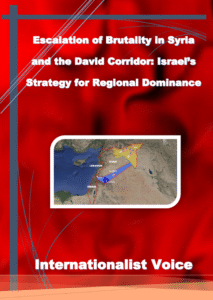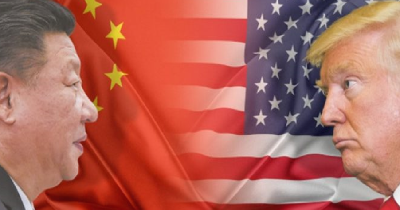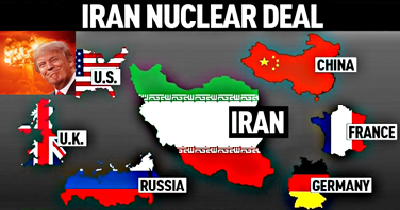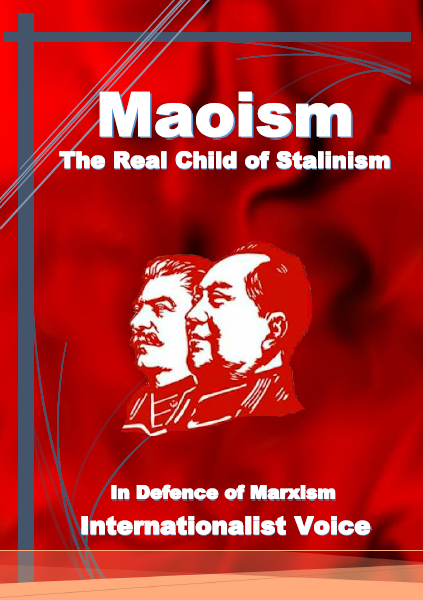Escalation of Brutality in Syria and the David Corridor: Israel’s Strategy for Regional Dominance
In December 2024, Assad’s dictatorship was overthrown with the help of jihadists and the support of Turkey, Israel, and their other allies. Many people celebrated, believing they had finally been freed from the clutches of the Assad family’s dictatorship, that the massacres and killings had come to an end, and that a bright horizon was opening up for their economic and social lives. However, what they failed to grasp was that this shift in political power was part of broader imperialist tensions—tensions through which rival imperialist powers succeeded in removing Syria from the sphere of influence of Iran and Russia and bringing it under their own. At the time, we emphasised that:
“This joy and celebration are likely to be short-lived, as the future may unveil even harsher realities.”[1]
Unlike the Assad family, after the fall of Bashar al-Assad’s regime, a government came to power that built its policy on engagement with the West, Arab states, and even Israel. Western officials travelled to Damascus one after another, and the United States lifted the ten-million-dollar bounty it had placed on al-Julani’s capture. By whitewashing al-Julani’s terrorist past, Western democracies effectively granted him a political baptism: they removed his jihadist garb, dressed him in a suit, and presented him to the world as a new statesman. Al-Julani was even invited to the Élysée Palace to cement his legitimacy and later went so far as to meet and shake hands with Donald Trump.
In practice, al-Julani eradicated Iran’s and Hezbollah’s influence in Syria, dealing a fatal blow to Iran’s imperial ambitions and fulfilling all the demands of the West, Arab states, Turkey, and his other backers. Following these developments, the United States, the European Union, and the United Kingdom lifted much of the economic sanctions imposed on the new Syrian government. He even declared his willingness to normalise relations with Israel without reclaiming the Golan Heights, and, in this context, meetings between representatives of both sides have taken place and continue to this day.
Nevertheless, not only have the security and living conditions of the Syrian people failed to improve, but the country is sinking ever deeper into a vortex of brutality, violence, sectarian tensions, and chaos. Israel, without perceiving the slightest threat from the new Syria, continues to relentlessly bomb and destroy the country’s infrastructure and military installations. Even the Ministry of Defence and the vicinity of the Syrian presidential palace have been targeted by Israeli strikes—an unmistakable message to al-Julani that no safe haven exists for him. The key question is this: why does Israel stoke tensions in Syria and persistently bomb its infrastructure and military installations in the absence of any real threat?
In reality, the fall of the Assad regime did not mark the end of a decades-long dictatorship but the beginning of a darker chapter in Syria’s modern history. The rise of Hay’at Tahrir al-Sham, supported by Turkey, Israel, and other regional and international backers with the aim of weakening Iranian and Russian influence, unleashed a wave of massacres, bloodshed, chaos, and sectarian violence. Ethnic and sectarian tensions in northern Syria, intensified by conflicts involving the Alawite and Druze minorities, further deepened the crisis. Widespread, systematic killings of these minorities turned Syria into a battleground for gangs and criminal factions. In this climate of turmoil, not only have security and stability collapsed, but the hope for the return of millions of Syrian refugees and displaced persons is fading by the day.
We will take a brief look at the brutality that has unfolded since the fall of the Syrian dictator, before examining the reasons behind it.
After Assad’s fall, Kurdish armed forces controlling north-eastern Syria engaged in heavy fighting with groups affiliated with the Turkish-backed Syrian National Army. Horrific scenes of slaughter and violence unfolded in Manbij and around the Tishrin Dam. The use of drone support and air strikes by Turkey-backed groups shifted the balance of power against the Kurds. Under these circumstances, the Kurdish forces, seeking to survive and prevent further large-scale attacks, moved towards cooperation and rapprochement with the newly established Damascus government; nevertheless, brutality and violence have persisted.
On 24 January 2025, a report emerged of a summary execution in the town of Fahil, near Homs, carried out by armed individuals affiliated with the new Syrian government led by Hay’at Tahrir al-Sham during a security operation, apparently targeting remnants of the former regime. Local witnesses claimed that the death toll reached 58; all the victims were men from the Alawite minority.[2]
On 30 January 2025, it was reported that armed individuals in the village of Arzah, located in the north-western outskirts of Homs, raided villagers’ homes overnight, banging on doors and targeting residents with silenced weapons, effectively carrying out summary executions.[3]
In March 2025, an unprecedented wave of sectarian violence swept through Syria’s coastal regions. According to a report by the UK-based Syrian Observatory for Human Rights, armed groups affiliated with the new government carried out coordinated attacks on Alawite villages in the Latakia and Tartus provinces, resulting in widespread killings. At least 1,614 Alawite civilians lost their lives during these massacres.[4]
Testimonies from survivors indicate that the attackers, who had close ties to the new power circles in Damascus, stormed Alawite homes, setting them on fire and executing many of the residents on the spot. Before carrying out the executions, they interrogated the victims about their religious affiliation. This incident is regarded as one of the bloodiest examples of sectarian cleansing since the fall of the Assad regime, triggering a wave of terror, displacement, and social collapse within the Alawite community. Its consequences have included the flight of around 40,000 people to Lebanon and the destruction of the economic and social infrastructure of this minority.
Throughout 2025, Alawite women and girls in Syria were subjected to a violent sectarian campaign. Reports indicate that many were abducted to areas under the control of Hay’at Tahrir al-Sham in Idlib province and forced into sexual slavery, in a pattern reminiscent of the fate of Yazidi women under ISIS rule. Numerous pieces of evidence document abduction, torture, and sexual abuse of these victims. This violence was not only physical but also symbolic, serving as a tool of intimidation and oppression against this ethnic minority. The situation became so severe that a British publication wrote:
“The Alawite women taken as sex slaves in Syria.”[5]
In July 2025, the province of Sweida witnessed one of the bloodiest events since Assad’s fall. During this wave of violence and killings, around 1,400 people were killed and nearly 176,000 were displaced[6]. The summary execution of approximately 140 civilians further fuelled the flames of ethnic and tribal hatred. The clashes, fought between Sunni Bedouin tribes and the Syrian government on one side and Israeli-backed Druze militias on the other, escalated sharply with Israel’s direct intervention. In pursuit of its imperial interests, Israel launched extensive air strikes against positions held by the Syrian government and Bedouin tribes in the south of the country, while simultaneously advancing on the ground. These actions effectively strengthened the Druze’s military and political position in the region. Due to their close ties with the Israeli Druze community, which is deeply integrated into and influential within Tel Aviv’s security and military structures[7], the Syrian Druze have readily served Israel’s strategic objectives and plans.
On the one hand, the presence of a weak and ineffective regime in Syria, and on the other, ongoing ethnic, religious, and tribal tensions, have provided Israel with an ideal opportunity to advance its imperial policies, including the plan to partition the country. Fomenting ethnic divisions, supporting the Druze, and the continuous bombing of Syria’s infrastructure and military facilities are all undertaken in pursuit of a single strategic objective: the realisation of the so-called ‘David Corridor’. In other words, Syria itself is not the ultimate goal; rather, Syria and, by extension, the ‘David Corridor’ serve merely as instruments in the service of Israel’s imperialist ambitions and those of its partners.
The David Corridor, as a geopolitical route, is intended to serve as the platform for implementing the ‘Greater Israel’ project. This corridor begins at the occupied Golan Heights and passes through the province of Sweida to reach eastern Syria. From there, it extends to the strategic border area between Jordan, Iraq, and Syria, before continuing on to Hasakah and ultimately connecting to Erbil. This land route is a tool that Israel plans to utilise to expand its influence and gain direct access to Iraq, Iran, Turkey, and beyond. The ‘David Corridor’ is not merely a military passage but a strategic foundation for implementing a far broader regional agenda: a plan aimed at redrawing the borders of the Middle East and reshaping the geopolitical chessboard of the region in line with the imperial interests of Israel and its allies.
Sheikh Hikmat al-Hijri, a prominent leader of the Druze community in Syria known for his pro-Israel leanings, recently emphasised the necessity of establishing a humanitarian corridor between the Druze-populated province of Sweida and the Kurdish regions of north-eastern Syria. He appears to present this plan using the rhetoric and discourse of ‘humanitarianism’—a discourse reminiscent of the wars Western democracies have waged in the Middle East under the banner of ‘humanitarian intervention’. The wars in Afghanistan, Iraq, the military intervention in Libya, and similar cases all began with the stated aims of supporting human rights and establishing democracy, yet other objectives lay beneath the surface. In other words, the opening of this route is also framed as a humanitarian act, but contrary to its humanitarian appearance, and despite Sheikh Hikmat al-Hijri’s rhetoric, more complex and far-reaching goals lie behind it. Sheikh Hikmat al-Hijri stated on this matter:
“A corridor must be opened to our Kurdish brothers.”[8]
In addition to Syria, destabilising Iraq and igniting sectarian conflicts—particularly tensions between Shia and Sunni—through support for remnants of jihadist groups and other Israeli proxy forces becomes more feasible with the realisation of the David Corridor. If this corridor is established, Israel will indirectly share a border with Iran and will be able to advance its plan to partition Iran, which aims to divide the country into seven weakened units, more easily. Some of these new units are intended to have a pro-Israeli orientation. Another key target of the David Corridor is Turkey; with the corridor in place, Israel will effectively share a border with Turkey as well, enabling it to pursue its imperialist ambitions with greater ease and strength. Weakening Turkey is also considered one of Israel’s long-term objectives.
During the fall of the Assad dictatorship, Turkey confidently regarded this transformation as a sign of its growing influence in the region. Ankara believed that, with the help of Israel and other allies, it had removed Syria from the sphere of influence of Iran—one of its regional rivals—and brought it into its own sphere of influence. It also hoped that this expansion of influence in Syria and the Middle East would strengthen its position in the Caucasus. However, evidence suggests that Turkey itself has been played in this equation and has effectively become a tool serving the imperialist ambitions of Israel and its Western partners.
Abdulkadir Selvi, an analyst for the newspaper Hürriyet—which is regarded as a pro-government outlet reflecting views close to the administration—believes that Israel’s goal is to fragment countries into small, weakened states to secure its long-term influence and control over the region. He states that Israel aims to divide Syria into four independent states and says the following on the matter:
“Israel intends to divide Syria into four parts: a Druze state in the south centred on Suwayda; an Alawite state in the west, covering Latakia and Tartus; a state affiliated with the PKK in the north, administered by the Syrian Democratic Forces (YPG); and an Arab Republic in the centre of the country.”[9]
Hakan Fidan, Turkey’s Foreign Minister, during the fall of the Assad regime and at a time when he was seemingly euphoric about Turkey’s expanding influence in the region, stated that they had negotiated with Russia and Iran and warned them not to become involved in military engagements—in other words, to refrain from militarily defending the collapsing Assad regime. He even emphasised that the Islamic Republic would learn from this new situation and its defeat in Syria, adding that Turkey’s messages about the Assad regime had been correct from the very beginning:
“Iran and Russia have concluded that our messages about the Assad regime were correct.”[10]
Just a few months after Turkey’s remarkable and heady victories in Syria, the same Hakan Fidan who once believed Turkey’s messages about the Assad regime were correct now believes that regional powers—especially Israel—have no desire to preserve Syria’s sovereignty and territorial integrity. By seeking to divide the country, they are effectively targeting Turkey’s national security. From Hakan’s perspective, the main threat is no longer Syria’s security, but Turkey’s:
“Any attempt to divide and destabilise Syria through violence constitutes a direct threat to our national security, and we will respond with immediate intervention.”[11]
Devlet Bahçeli, leader of Turkey’s Nationalist Movement Party, went further and, in response to Israel’s attacks on Iran, described these assaults as a covert message to Turkey. He emphasised that the ultimate target of this project is Turkey itself. Bahçeli believes that Israel, by expanding its military and political influence in the region and pursuing separatist policies, aims to geopolitically encircle Turkey and weaken its strategic position.
“In the vortex of crisis and chaos, which intensifies as various elements intertwine, the ultimate hidden target is Turkey. The Turkish nation remains united and steadfast against the schemes and conspiracies of Zionism and imperialism, and no compromise or surrender is conceivable. The operation against Iran is, in one sense, a covert message to Turkey.”[12]
Cem Küçük, a columnist for the pro-government Turkish newspaper Türkiye Gazetesi, has expressed concern over Israel’s partition of Syria, arguing that this division would pave the way for the eventual partition of Turkey. In his view, this is part of Israel’s broader strategy, and he articulates his concern as follows:
“If the Druze establish a state, Israel will recognise it. From there, the path towards creating an independent PKK state will also be paved. This is their objective. Israel will not stop until it partitions Syria. It wants Syria to be fragmented, just like Iraq. Along the way, it plans everything to achieve this goal. Anyone who follows global politics knows that Israel will not stop. It wants the Middle East to remain perpetually in flames and turmoil.”[13]
Undoubtedly, the change of regimes in the Middle East and the redrawing of the region’s political chessboard by installing pro-Western governments have been carried out in line with the interests of Western democracies. However, every war and social upheaval has its own material foundations and specific causes. Regime change in the Middle East was not the direct aim of the Gulf Wars, nor of the wars in Afghanistan and Iraq. Rather, these conflicts were primarily waged to consolidate the new world order following the end of the Cold War and to rally other powers behind the United States as the sole global superpower. All these wars were justified through the use of ‘humanitarian’ rhetoric. In other words, the United States, through orchestrating bloodbaths, managed to cement its hegemony as the unchallenged global power – a power now being challenged and weakened by China.
Naîm Babüroğlu, a Turkish expert on international security, in an interview with the television channel Sözcü, argued in his analysis of regional developments that the attack on Iran is part of a project that the United States and its regional allies had devised years ago to change Middle Eastern regimes and reshape the region’s geopolitics:
“The attack on Iran is part of a project initiated by the United States and Israel in 2001 aimed at changing regimes in the Middle East, and now it is Iran’s turn. The objective is to weaken the Iranian regime through airstrikes and to incite domestic unrest in order to bring about regime change.”[14]
As an expert, he is unable to comprehend that the attack on Iran is part of a broader strategy to weaken Russia and China, while simultaneously serving as a warning to China and a demonstration of the United States’ military, security, and intelligence power, especially towards China. Nevertheless, he believes that the next target of this project is Turkey itself — a belief which is indeed correct. According to him, given Turkey’s unique characteristics, this objective will not be pursued through direct war or military intervention, since Turkey is a NATO member and a direct attack would trigger NATO’s Article 5[15]. Instead, it will be pursued through political pressure, fomenting ethnic tensions, and creating crises of migration and asylum. On this matter, he states:
“The next step will see Turkey threatened—not by military action or direct warfare, but through political pressure, ethnic tensions, and a migration crisis.”[16]
The sum of these events and arguments indicates that we can expect an escalation of imperialist tensions in the future. Each of the great and lesser powers acts like gangsters, solely pursuing their own imperialist interests—interests that often conflict with those of their rivals, thereby exacerbating these confrontations. Israel’s ability to advance such policies stems from the fact that it has effectively become the executive arm of the imperialist strategies of Western democracies and their Arab allies. Nevertheless, these very actors each seek to realise their own independent imperialist ambitions, which in turn serves as yet another factor intensifying imperialist tensions in the region.
With the globalisation of capital markets at the beginning of the twentieth century, trade zones and spheres of influence were divided among the advanced capitalist countries. In this process, spheres of influence and trade replaced traditional colonial policies. These divisions intensified competition between major and minor powers, gradually leading to military tensions and ultimately bloody conflicts. Simultaneously, this situation led to an unprecedented expansion of armaments and the complete subjugation of economic and social life to military demands and a constant state of war readiness.
These ongoing confrontations have made war a constant prospect and militarism a way of life for all countries—whether large or small, powerful or weak, aggressors or victims. War has become the very essence of life in the era of capitalism’s decline. Capitalism is no longer capable of offering a hopeful future and instead spreads savagery and barbarism to ever greater parts of the world.
Only the class struggle of the working class can offer a genuine alternative to the barbarity of capitalism and imperialist policies – whether pursued by great or small powers, and whether under the guise of democracy or dictatorship. The proletariat is inherently opposed to imperialist policies, for in its struggle, economic domination and national interests hold no meaning. The working class, both in the region and across the world, must learn from the potential consequences of developments and, in the face of patriotism and nationalism cloaked in the rhetoric of national interest, defend its class interests and expand the class struggle on the basis of those interests. This struggle must transcend national borders and grow on an international scale. Only the global working class, through the overthrow of capitalism worldwide, can abolish the material foundations of imperialist tensions and bring forth a world worthy of humanity.
A&J
2 August 2025
Notes:
[1] An Intensification of Savagery in the Middle East and the Further Decline of Capitalism into Barbarism.
[3] Civilians executed in Hama countryside.
[4] The Syrian Observatory for Human Rights.
[7] Israeli Druze, as the only Arab minority for whom military service is compulsory, have a significant presence in the army, holding a disproportionately high share of combat and officer positions among non-Jews. Consequently, they have achieved a higher degree of social and political integration and benefit from the associated advantages. In contrast, most Israeli Arabs are exempt from military service, and their participation in national service programmes is minimal. This has restricted their employment opportunities and limited their avenues for social advancement. Overall, the Druze have developed stronger ties and greater integration with Israeli society than other Arab minorities in Israel.
[15] According to Article 5 of the North Atlantic Treaty (NATO), any armed attack against one or more members of the alliance is considered an attack against all members. In the event of such an attack, the other member states are obliged to come to the aid of the country under assault and to take all necessary measures, including the use of military force, to restore and maintain collective security.
[16] As source 11.
Download as PDF















